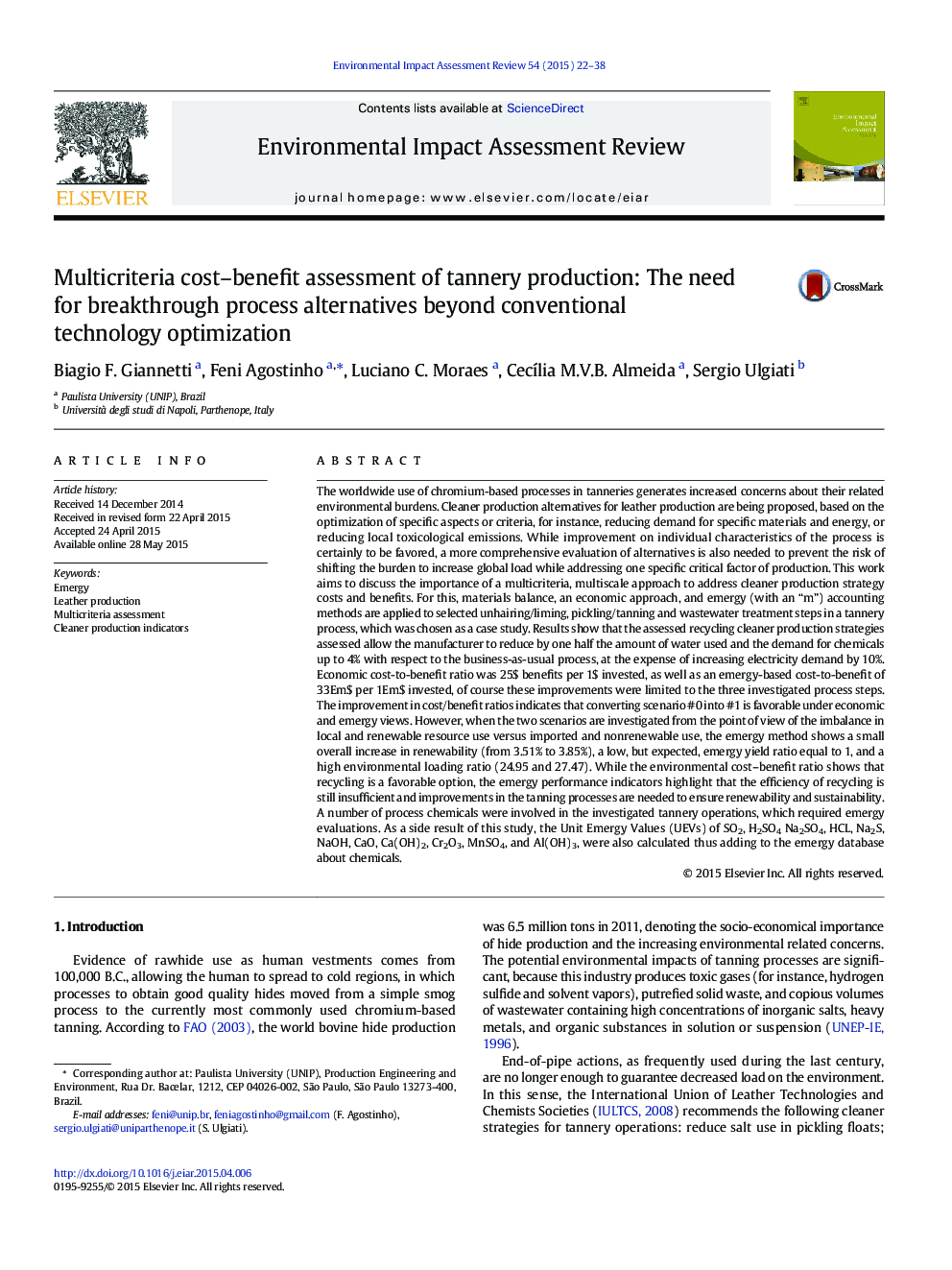| کد مقاله | کد نشریه | سال انتشار | مقاله انگلیسی | نسخه تمام متن |
|---|---|---|---|---|
| 7465224 | 1484991 | 2015 | 17 صفحه PDF | دانلود رایگان |
عنوان انگلیسی مقاله ISI
Multicriteria cost-benefit assessment of tannery production: The need for breakthrough process alternatives beyond conventional technology optimization
ترجمه فارسی عنوان
ارزیابی هزینه-سود چند منظوره تولید آفتابگردان: نیاز به فرآیندهای دستیابی به موفقیت بیشتر از بهینه سازی تکنولوژی متعارف
دانلود مقاله + سفارش ترجمه
دانلود مقاله ISI انگلیسی
رایگان برای ایرانیان
کلمات کلیدی
ایمان، تولید چرم، ارزیابی چندین معیار، شاخص های تولید کننده تمیز کننده،
موضوعات مرتبط
مهندسی و علوم پایه
مهندسی انرژی
انرژی های تجدید پذیر، توسعه پایدار و محیط زیست
چکیده انگلیسی
The worldwide use of chromium-based processes in tanneries generates increased concerns about their related environmental burdens. Cleaner production alternatives for leather production are being proposed, based on the optimization of specific aspects or criteria, for instance, reducing demand for specific materials and energy, or reducing local toxicological emissions. While improvement on individual characteristics of the process is certainly to be favored, a more comprehensive evaluation of alternatives is also needed to prevent the risk of shifting the burden to increase global load while addressing one specific critical factor of production. This work aims to discuss the importance of a multicriteria, multiscale approach to address cleaner production strategy costs and benefits. For this, materials balance, an economic approach, and emergy (with an “m”) accounting methods are applied to selected unhairing/liming, pickling/tanning and wastewater treatment steps in a tannery process, which was chosen as a case study. Results show that the assessed recycling cleaner production strategies assessed allow the manufacturer to reduce by one half the amount of water used and the demand for chemicals up to 4% with respect to the business-as-usual process, at the expense of increasing electricity demand by 10%. Economic cost-to-benefit ratio was 25$ benefits per 1$ invested, as well as an emergy-based cost-to-benefit of 33Em$ per 1Em$ invested, of course these improvements were limited to the three investigated process steps. The improvement in cost/benefit ratios indicates that converting scenario #0 into #1 is favorable under economic and emergy views. However, when the two scenarios are investigated from the point of view of the imbalance in local and renewable resource use versus imported and nonrenewable use, the emergy method shows a small overall increase in renewability (from 3.51% to 3.85%), a low, but expected, emergy yield ratio equal to 1, and a high environmental loading ratio (24.95 and 27.47). While the environmental cost-benefit ratio shows that recycling is a favorable option, the emergy performance indicators highlight that the efficiency of recycling is still insufficient and improvements in the tanning processes are needed to ensure renewability and sustainability. A number of process chemicals were involved in the investigated tannery operations, which required emergy evaluations. As a side result of this study, the Unit Emergy Values (UEVs) of SO2, H2SO4 Na2SO4, HCL, Na2S, NaOH, CaO, Ca(OH)2, Cr2O3, MnSO4, and Al(OH)3, were also calculated thus adding to the emergy database about chemicals.
ناشر
Database: Elsevier - ScienceDirect (ساینس دایرکت)
Journal: Environmental Impact Assessment Review - Volume 54, September 2015, Pages 22-38
Journal: Environmental Impact Assessment Review - Volume 54, September 2015, Pages 22-38
نویسندگان
Biagio F. Giannetti, Feni Agostinho, Luciano C. Moraes, CecÃlia M.V.B. Almeida, Sergio Ulgiati,
